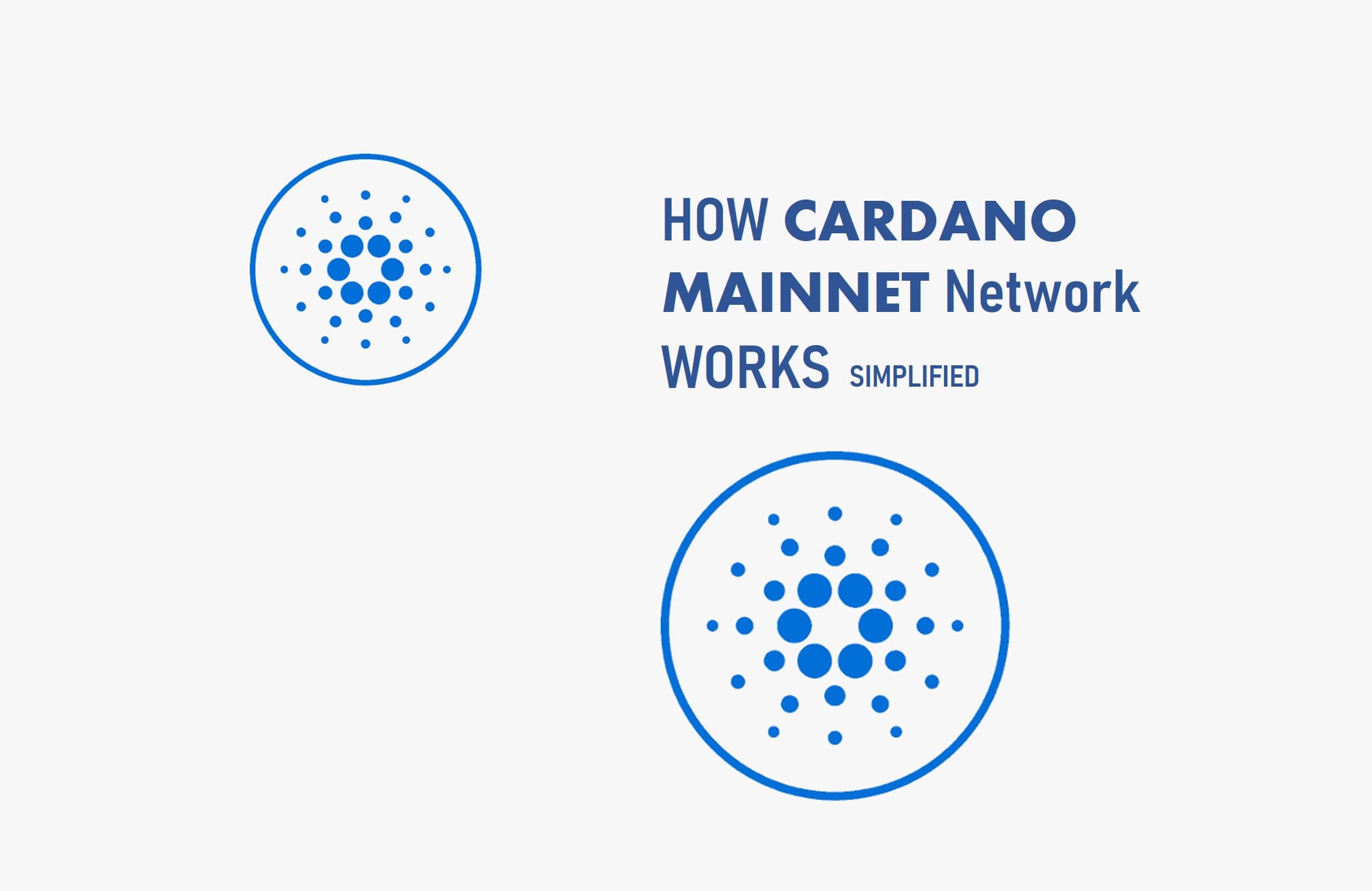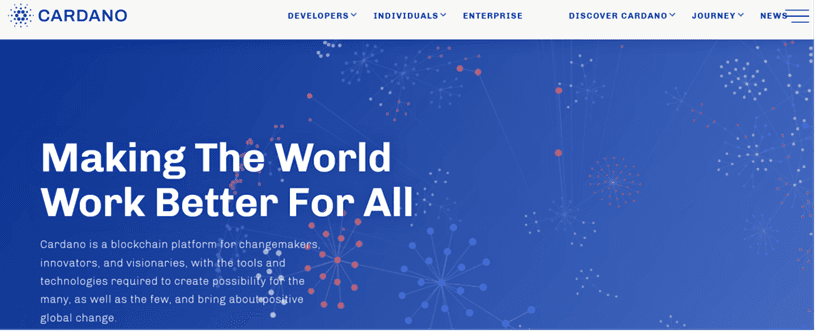
Cardano recently postponed the Vasil hard fork update on its testnet, which would rebound on its mainnet, improving scalability and transaction performance.
It is expected that with the Vasil hard fork, developers and stake pool operators can now test run on the testnet to determine its performance since the upgrade.
In addition, the Vasil update is poised to give Cardano users more reasons to make use of the network with its improved block creation speeds and reduced network costs.

Key Takeaways
• The Cardano mainnet network includes the Cardano node, which is responsible for delivering information that includes block diffusion and transaction information for establishing a better data flow.
• As a Cardano network user, you can decide to pledge your ADA when you register a stake pool to make it more attractive to people who want to delegate, and in turn, you get rewarded.
• The Cardano keys on the Cardano network are used to sign and validate payments and staking certificates and also to identify and define addresses on the Cardano blockchain.
• If you wish to see all the relevant information concerning blocks in each given epoch, the Cardano Explorer is the best tool to use to achieve that.
SEE ALSO: How to Understand Cardano Via Cexplorer (Explained)
SEE ALSO: How Many Smart Contracts Does Cardano Have?
SEE ALSO: How To Create Cardano NFTs (Step by Step Guide)
This update, albeit new, will bring about a greater collaboration among other blockchains and networks, and with the help of the Cardano community, the Cardano mainnet network will become even better.
What Exactly is the Cardano Mainnet?
The Cardano mainnet is the live blockchain that has been deployed and is in operation. Assets held on the mainnet hold value as opposed to assets on a testnet that does not hold value.
Currently, the alonzi mainnet is the latest on the Cardano blockchain, and it introduced the concept of smart contracts to the Cardano blockchain alongside other benefits such as DeFi app deployment and the inclusion of Plutus scripts.
The smart contract feature has also upgraded Cardano to match other competitive blockchains such as Ethereum and Solana.
How the Cardano Mainnet Network Works
The Cardano mainnet exists to make Cardano one of the best blockchain platforms in existence.
It aims to provide a more balanced and sustainable ecosystem that better accounts for the needs of its users as well as other systems seeking integration.
Cardano is conceived as the third-generation blockchain as it combines the properties of the prior generations and evolves to meet all the arising needs of users. When comparing blockchain properties, many aspects should be considered.
Thus, the best solution must ensure the highest security, scalability (transaction throughput, data scale, network bandwidth), and functionality (besides transaction processing, the blockchain should provide all means for business deal settlement).
Moreover, it is important to ensure that blockchain technology is constantly developing in terms of sustainability and is interoperable with other blockchains and financial institutions.
To address these needs, Cardano focuses on such core concepts as scalability, interoperability, and sustainability.
Cardano’s Development Themes
Cardano development’s journey has been split into five main themes, focusing on such core functionalities as:
- Byron — foundation establishment
- Shelley—decentralization
- Goguen—smart contracts
- Basho—scalability
- Voltaire — governance
Each theme is centered around a set of functionalities that are being delivered across multiple code releases.
While these development streams are delivered sequentially, the work for each happens in parallel – with research, prototyping, and development often in progress all at once across the different stages.
What to know About Hard Forks
The term “hard fork” describes a radical change in the blockchain: a change from one protocol to another, for example. A hard fork indicates block changes or a change to their interpretation in most blockchains.
Traditionally, when conducting a hard fork, the current protocol would stop operating, new rules and changes would be implemented, and the chain would restart.
It is important to note that a hard-forked chain will be different from the previous version and that the history of the pre-forked blockchain will no longer be available.
The Cardano blockchain hard-forked from a Byron federated model to a Shelley decentralized one.
However, this hard fork was unique. Instead of implementing radical changes, Cardano ensured a smooth transition to a new protocol while saving the history of the previous blocks.
This means that the chain did not change radically; instead, it contains Byron blocks and, after a transition period, Shelley blocks. There was no fundamental restart point that erased the history of previous activities.
What is a Hard Fork Combinator?
A combinator is a technical term used to indicate the combination of certain processes or things.
In the case of Cardano, a hard fork combinator combines protocols, thereby enabling the Byron to Shelley transition without system interruption or restart.
It ensures that Byron and Shelley’s ledgers appear as one ledger. Shifting from Ouroboros BFT to Ouroboros Praos does not require all nodes to update simultaneously.
Instead, nodes can update gradually. Some can run Byron blocks while others can run Shelley blocks.
The hard fork combinator is designed to enable the combination of several protocols without having to make significant adjustments.
The current Cardano chain combines Byron and Shelley blocks, and after future transitions, it will also combine Goguen, Basho, and Voltaire blocks – all as a single property.
This combinator facilitates the transition from Shelley to Goguen and beyond by simplifying the previous Byron-to-Shelley evolution.
Frequently Asked Questions (FAQs)
Does the Cardano network support BEP2 tokens?
The Cardano network does not support BEP2 tokens. Instead, it supports only ADA, its native cryptocurrency. You can, however, sell BEP2 tokens in exchange for ADA and make your transactions.
Which algorithm does Cardano use?
Cardano uses Ouroboros, an algorithm that uses a proof-of-stake (PoS) protocol to mine blocks. Ouroboros was designed by experts in the fields of cryptography and engineering.
It is based on scientific and mathematical principles to increase the efficiency and security of the platform.
What problems does the Cardano network solve?
Cardano aims to solve problems related to scalability, interoperability, and sustainability on cryptocurrency platforms. These three are the major issues being faced by most platforms at present.
Final Thoughts
The Cardano mainnet has been making efforts to improve its performance, which is why it has made plans to upgrade the Vasil hard fork which would see it be able to achieve more scalability and faster transaction speeds with lower network costs.
Hopefully, this upgrade will be achieved within the nearest possible time frame so that Cardano users can have more reasons to utilize the network even more.
Read More




